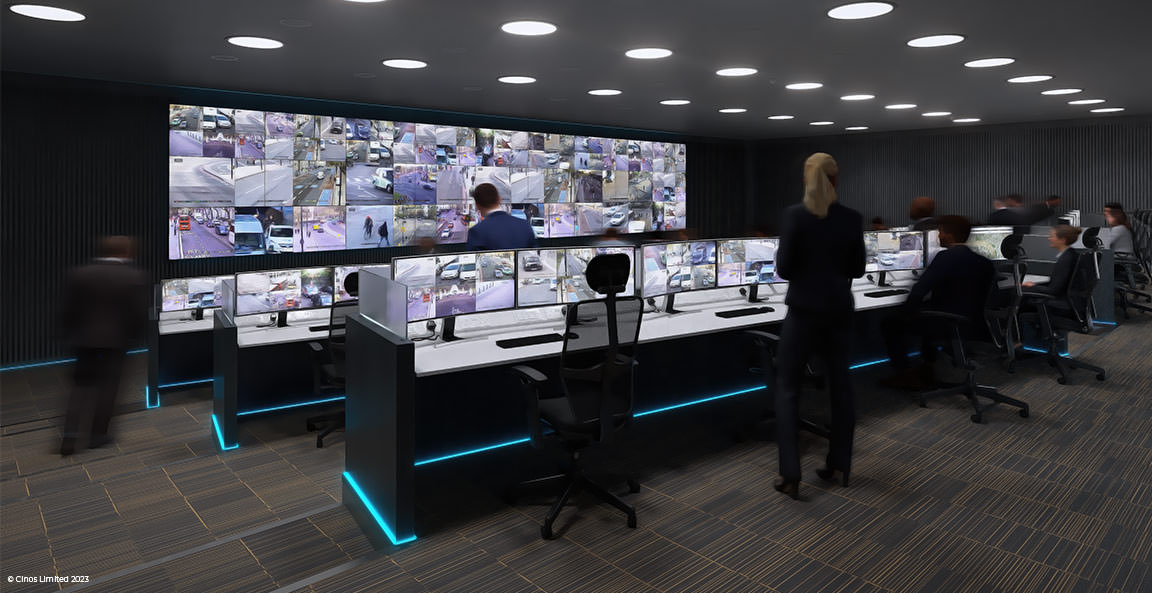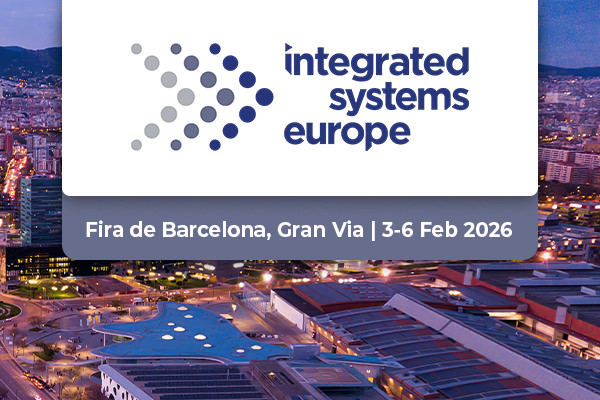
Command and Control Rooms:
Designing Mission Critical Environments for the Police
March 17th, 2023
As mission critical environments, police command and control rooms are at the centre of operations. They help orchestrate the strategy and responses required to successfully achieve operational objectives. But for forces up and down the country, the demand placed on their control rooms is increasing. Especially as the variety of data sources that inform decision making and actionable intelligence grow.
As social media feeds, real-time video, street and body worn cameras, helicopters, observation posts, dispatch and tracking software, radio commentary and telemetry from drones come into the mix, it’s vital that control room personnel can quickly understand problems, determine effective action and provide situational awareness. The need for a full picture is heightened in fast paced scenarios or when policing high profile events. This puts the control room at the centre of data collection. Dependant on multi-channel communications and resilient networks, it’s important not to underestimate how critical the design of these spaces is.
Command and control room design – getting a bird’s eye view
Command and control rooms need to be designed and built to support police forces in the most effective and streamlined way possible. Protecting and serving the public is at the heart of their purpose so providing easy to use, robust and always-on functionality across large scale operations is of the upmost importance.
The way information flows and instructions are communicated is critical to the success of any command and control environment. There’s a lot of data that must be displayed, understood and shared to all relevant stakeholders, especially when events are taking place and situations are fluid. They are multifaceted spaces and often feature breakout rooms, that enable officers and operators to share intelligence and communicate desired objectives and outcomes.
In the main control room, local spot monitors are also used at the operator positions to enable detailed analysis of specific information sources or confidential operations. Intuitive user interfaces are an effective way to visualise and monitor this data and allow operators to find and utilise the information at hand quickly and efficiently. This could be CCTV feeds, news feeds, social media feeds, weather information, network monitoring applications, building management systems or a combination of all.
Furthermore, the systems must be always available with redundancy or backup capabilities built in. For example, in mission critical environments control room video wall design should be modular and include failover power supplies. This means in the event of a failure, only a small part of the wall is affected and due to its modular design, displays can easily be swapped out. For optimum reliability, dual networks and power supplies enable an uninterruptible service, which is pivotal to the day-to-day operation of control rooms.

Ongoing maintenance for uninterrupted mission critical operations
It’s essential that everything in the control room, from the people to the technology works at an optimal level, so that calls and situations are handled effectively and efficiently. This means that each piece of equipment will require some sort of service or maintenance, particularly when those devices are linked to the network.
The introduction of Internet Protocol (IP) technology has made it possible for internet enabled devices to use standards-based networks, making replacement in the event of faults or maintenance, quick, easy, and with minimal disruption. Additionally, IP based systems make it easy to scale and increase the capacity of the control room as well as take on additional services. For example, IP encoders and decoders can be implemented to provide video feeds to multiple locations.
Due to their sensitive and critical nature, command and control rooms must maintain 100 percent uptime. To achieve this, many organisations look to mirror their environments to a separate disaster recovery site or in some instances, run rooms in parallel so that operations can continue amid any disruption or planned maintenance. Transporting data using IP technology allows for routing and switching through networks with load balancing and redundancy built in. This reduces any potential bottlenecks by switching to a dispersed model, where in the event of a failure, single locations are affected as opposed to the entire room.
Alongside this, developing and implementing a programme for maintenance, support, and repair helps ensure the control room maintains the required uptime and optimal performance. And while working with a partner will ease the pressure on internal IT resources, it’s important to choose one that has the situational understanding and operation experience of command and control environments.
Improving user effectiveness and efficiency for control room operators
A control room is no ordinary workspace and personnel listen, react and cope with emotionally challenging events. Operator comfort shouldn’t be overlooked and must be prioritised when designing the environment or introducing new technology and processes. Rooms need to maintain a comfortable temperature and lighting should aid concentration as staff often work long shifts. Furniture is also important and adjustable consoles, desks and chairs can help operators remain alert and focused.
The layout of a control room is a key element to how the space functions as well as operator performance and comfort. They must be designed in a way which allow colleagues to observe each other’s visual cues and react accordingly. For example, a controller may pick up on the severity of an incident based on the call handler’s physical reaction, enabling them to respond quickly and prepare to orchestrate operations accordingly. These spaces are often in use 24/7 so it’s important that the environment supports officers and operators to plan and respond to critical events and serve the public.
Protecting and serving the public is at heart of what police forces do and control rooms are central to these operations. To ensure that situations are handled effectively and efficiently it is essential that everything in the control room, from the people to the technology operate at an optimal level. Selecting a partner that has the situational understanding and operation experience of these environments is crucial for the maintenance, uptime and evolution of these spaces.




